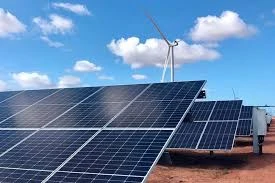How to Connect Solar Panels in Parallel for Increased Power Output
Connecting Solar Panels in Parallel A Comprehensive Guide
In recent years, the adoption of renewable energy sources has gained tremendous momentum, with solar power leading the charge. Solar panels convert sunlight into electricity, and understanding how to connect them efficiently is key to maximizing their output. One of the common methods for connecting solar panels is in parallel. This article will explore the benefits, considerations, and steps involved in connecting solar panels in parallel.
Understanding Parallel Connection
When solar panels are connected in parallel, their positive terminals are joined together, and their negative terminals are linked together. This configuration results in an increase in current (measured in Amperes) while maintaining the same voltage (measured in Volts). For instance, if you connect two 12V solar panels rated at 5 Amperes each in parallel, the system will provide 12V at a total current of 10 Amperes.
Benefits of Parallel Connections
1. Increased Current Output By connecting panels in parallel, you can achieve a higher total current output, which is particularly beneficial for battery charging systems that require higher amperage.
2. Voltage Consistency Since the voltage remains constant in a parallel system, it can be easier to match the requirements of certain appliances or battery systems, especially those designed for specific voltage ratings.
3. Flexibility in Design Parallel configurations provide flexibility when it comes to system design. This allows for the addition of more panels without affecting the voltage output of the existing panels.
4. Shade Tolerance In cases where some panels may be shaded, parallel connections allow the unshaded panels to continue functioning at maximum efficiency. In contrast, a string series setup would result in a significant reduction in output if one panel is obstructed.
5. Simpler Wiring The wiring in parallel systems can be more straightforward, making installation easier for DIY enthusiasts.
Considerations When Connecting in Parallel
While connecting solar panels in parallel has its advantages, there are also considerations to keep in mind
1. Matching Panel Specifications It is crucial to connect solar panels with similar voltage ratings and current ratings. Mismatched panels can lead to inefficiencies and potential system damage.
connecting solar panels in parallel

2. Fuse Protection Installing fuses between each solar panel is important to prevent backflow of current, which can damage panels. In the case of a single point of failure, the fuse will blow, isolating the affected panel and protecting the rest of the system.
3. Wire Gauge Use adequately sized wires to accommodate the higher current output. Undersized wires can lead to voltage drops and overheating, reducing the system's efficiency and safety.
4. Solar Charge Controller If the solar panels are being used to charge batteries, a suitable solar charge controller must be incorporated into the design. This device regulates the voltage and current coming from the panels to the batteries.
Steps to Connect Solar Panels in Parallel
1. Gather Materials You will need solar panels, appropriate wiring, connectors, fuses, and a multimeter to check connections.
2. Setup Panels Place the solar panels in a location with optimal sunlight exposure. Ensure that they are clean and free from obstructions.
3. Connect the Positive Terminals Using the appropriate wire gauge, connect the positive terminal of the first panel to the positive terminal of the second panel and so on.
4. Connect the Negative Terminals Similarly, connect all negative terminals together.
5. Install Fuses Place a fuse on the positive wire of each solar panel to protect against overloads.
6. Connect to Charge Controller or Battery Bank Finally, connect the combined output from the panels to the solar charge controller or battery bank.
7. Test the System Use a multimeter to ensure that the voltage and current levels are as expected.
Conclusion
Connecting solar panels in parallel is an effective way to enhance the overall performance of a solar power system. By understanding the benefits and considerations associated with parallel connections, you can make informed decisions that maximize the efficiency and longevity of your solar energy setup. As the world moves toward more sustainable energy solutions, mastering these techniques will empower individuals and communities to harness the full potential of solar power.
-
String Solar Inverter: The High-Efficiency Solution for Smart Solar EnergyNewsJul.14,2025
-
Revolutionizing Rooftop Energy with the Power of the Micro Solar InverterNewsJul.14,2025
-
Power Independence with Smart Off Grid Solar Inverter SolutionsNewsJul.14,2025
-
On Grid Solar Inverter: Powering the Future with Smart Grid IntegrationNewsJul.14,2025
-
Monocrystalline Solar Panels: High-Efficiency Power for the Future of Clean EnergyNewsJul.14,2025
-
Bifacial Solar Panel: A Smarter Investment for Next-Generation Energy SystemsNewsJul.14,2025







